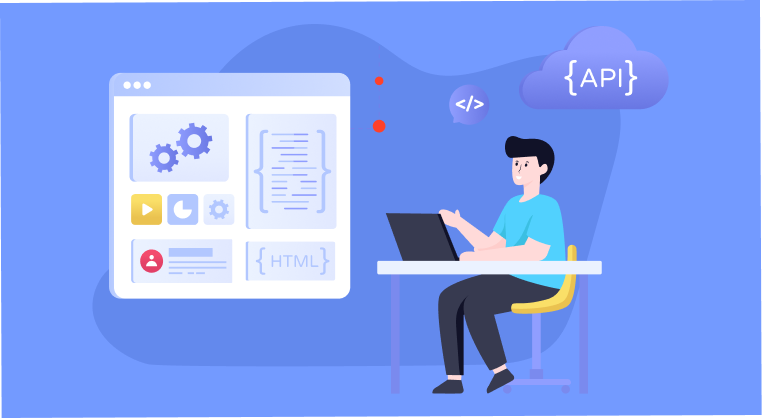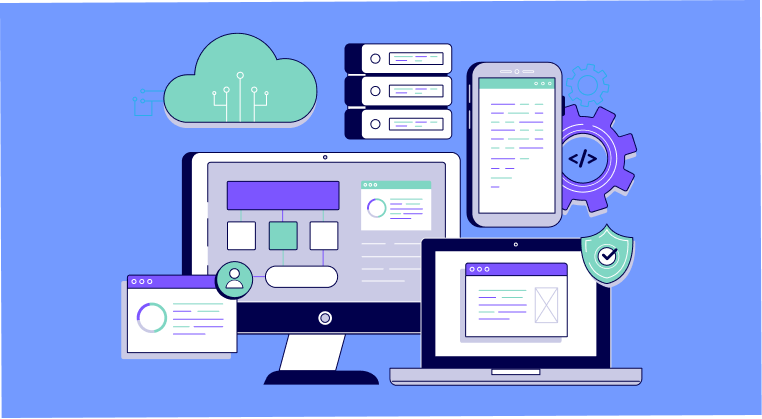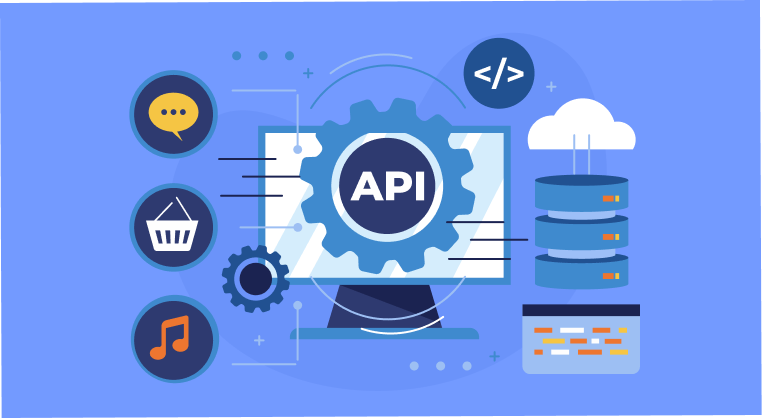Quick Guide to Integration Platform as a Service
The platform for integration as a service (iPaaS) is a collection of automated tools for integrating software applications deployed in various environments. Large enterprises that run enterprise-level systems frequently use iPaaS to integrate applications and data that reside on-premises as well as in public and private clouds.

An integration platform as a service platform typically provides pre-built connectors, business rules, maps, and transformations that facilitate application development and orchestrate integration flows. Some iPaaS providers provide custom development kits to modernize legacy applications and add capabilities like mobile support, social platform integration, and business data management. Although IT departments can handle integration on their own, it is sometimes more efficient and cost-effective to delegate that management responsibility to a third-party iPaaS provider.
Know Integration Platform as a Service
An iPaaS provider typically hosts application servers and infrastructure data, as well as provides integration tooling and middleware to assist developers in building, testing, deploying, and managing cloud-based software. Most iPaaS offerings also reduce the time it takes to develop integration flows across a business by utilizing pre-built connectors and business rules to define interactions in multi-tenant environments.
Consider an iPaaS provider to be a contractor hired to manage and assist with a kitchen renovation. While the homeowner selects the specific appliances, flooring, lighting, or other custom design options that they desire and can afford, the contractor handles the underlying requirements, such as acquiring materials or coordinating with specialists such as electricians and carpenters.
The same can be said for iPaaS: the vendor manages and governs the various services, while the business pursues and requests support for custom application features and software functionality.

iPaaS Capabilities and Functionalities
Most iPaaS platforms and tools support the same methods for connecting various applications, platforms, and systems – though they may not all include the same specific integrations. The following are examples of common iPaaS capabilities:
- The simplicity of platform deployment, data integration, and app management processes.
- The breadth of integration toolkits and pre-built data connectors.
- Level of support for SaaS as well as locally hosted applications
- Support for protocols such as HTTP, FTP, Open Data Protocol, and Advanced Messaging Queuing Protocol
- The ability to create custom connectors and change access mechanisms
- The capability of processing, cleaning and transforming data in formats such as XML and JSON
- When dealing with large-scale data operations and concurrent executions
- Real-time processing and batch data integration are supported.
- Failures, latency, resource utilization, and workflow performance are all monitored. as well as access control, data encryption, and single sign-on integrations.
How iPaaS Works: The integration platform as a service connects applications that run locally, in the cloud, or across clouds.
Advantages and Disadvantages of iPaaS
At its best, iPaaS assembles an organization's unique needs into a cloud-based toolset designed to handle the increased data volume associated with cloud environments, mobile device support, accelerated application development cycles, and complex B2B transactions. This frequently includes real-time integration, with the goal of minimizing disruptions caused by application interaction incompatibilities and diverse data formats.
iPaaS can also simplify an organization's overall technology infrastructure by establishing a virtual platform that connects applications and resources to form a consistent structure. The iPaaS (integration platform as a service) framework integrates resources across multiple clouds as well as between cloud and legacy applications.
Other Advantages of iPaaS
It assists IT teams in navigating a business's expanding integration requirements without adding additional resource drain and management overhead.
enhancing security by putting the vendor in charge of security and providing built-in monitoring, threat detection, and observability tools, and providing access to ecosystems of application development, deployment, and management tools that easily integrate with the iPaaS vendor's platform.
However, organizations must balance the benefits of iPaaS with the risks it may pose. Some of the notable challenges associated with iPaaS adoption are as follows:
Many iPaaS offerings perform better in certain scenarios and use cases than others, making it difficult for organizations to select the best vendor.
While iPaaS handles many management concerns, an organization must dedicate personnel to oversee the platform's operations and evaluate its impact on business processes on a regular basis.
Although iPaaS solutions can manage security, the organization is ultimately responsible and liable for any breaches or data loss that occur.
As always, the first step is to determine what your organization requires before deciding whether iPaaS is the solution in whole or in part. Is it essential for your company to integrate local and cloud integrations, including SaaS? Is the primary goal to establish B2B data exchanges? Is it necessary to support decoupled workloads like service-oriented architecture and microservices?
iPaaS vs PaaS vs SaaS Platforms
It is best to understand what each service model does before comparing.
Platform as a service (PaaS) is a type of cloud-based toolset that allows developers to manage services. PaaS focuses on a specific aspect of a development project rather than the entire infrastructure. This approach enables developers to change and upgrade operating systems while still collaborating and avoiding system disruption. As previously stated, iPaaS combines several platforms and provides the same benefits as PaaS on a larger scale.
SaaS contracts with a third-party provider to host applications over the internet. This eliminates the need for a company to maintain its own data center or computers, saving money, resources (such as data storage), and time.
iPaaS tools can help to simplify hybrid SaaS deployments and work best with existing legacy systems that are medium to low in complexity.
iPaaS vs ESB vs API Management
While the lines between the two have become less blurred over time, many organizations continue to debate whether to use an iPaaS or an Enterprise Service Bus (ESB) to handle their integration needs. Most modern ESBs can integrate SaaS applications, but they are best suited for legacy, on-premises, and primarily internal applications. Some may find that iPaaS options appear to be less expensive than ESB counterparts, provide greater scalability, and lend themselves to B2B integration outside of an organization's own systems. This may be true, but some iPaaS offerings may support legacy, process-heavy software systems that underpin the secure management of sensitive company data less effectively.
Though it embodies a different set of enterprise software concerns, API management is frequently mentioned in the context of iPaaS conversations. APIs are a popular way to integrate applications via well-documented interfaces – as long as every application uses the same API, which is difficult to achieve. Many iPaaS providers provide an ""API-driven"" integration approach that heavily relies on API messaging and data sharing to enable critical application interactions.

However, an integration platform as a service does not replace the systems that organizations should put in place to monitor, track, and care for the foundational APIs that connect their systems and make day-to-day operations easier. In fact, most businesses should use both iPaaS and API management, rather than just one. It's worth noting that some iPaaS vendors, such as MuleSoft, IBM, and Boomi, offer API management as part of their overall software services portfolio.
Vendors and Tools for iPaaS
Integration platform a-service vendors provide a wide range of options for integrating software systems and applications with public and private clouds at varying levels of complexity and cost. Some are concerned with large-scale enterprise operational issues, while others are concerned with emerging technologies, which are frequently pursued by smaller-scale businesses that embrace innovative software approaches and deployment techniques.
The first group consists of older, established integration firms that have adapted their tools to work with cloud services. Microsoft, Tibco, OpenText, Informatica, SnapLogic, and IBM are a few examples of companies that create integration service platforms by leveraging their experience and incorporating user needs. Other well-known software vendors, such as Oracle and SAP, have developed their own iPaaS to handle end-to-end integrations for their extensive platforms Among the new age applications here we have Applet.io. While the old-school vendors frequently require large amounts of software, which is typically provided through long-term service agreements, many large enterprises find solace in the relatively rock-solid stability these vendors represent.
Jitterbit, SnapLogic, Boomi, Talend, and MuleSoft are among the second generation of iPaaS providers. Initially aimed at small and midsize businesses making the transition to cloud and mobile development, these vendors are increasingly focusing their API-driven integration approaches on large enterprises. These vendors may lack the underlying structure and familiar history of the other vendors, but they place a strong emphasis on innovative technologies such as artificial intelligence and real-time data analytics. Recently, providers have increased their capacity to support low-code programming and citizen development.
Meanwhile, some newer entrants in the integration platform as a service market offer products that are typically best suited for small-scale businesses and operations, but with innovative integration methods that are desirable for enterprise-level businesses. Integrated, Zapier, SyncApps, and Automate.io, for example, provide ""one-click"" and low-code workflow integration, whether for a one-to-one integration or a more complex collection of software. Martini and Tray.io, for example, use an API-centric approach to automate workflow integrations, manual processes, and business rule enforcement. Many of these newer vendors also provide open-source software for free.
Conclusion
Finally, the major cloud platform providers offer a wide range of native integration tools for connecting applications, data, and services to other cloud platform ecosystem services, including third-party services. Even if they are not labeled as such or adhere to a strict definition of iPaaS, they may perform the same function A few examples include Amazon AppFlow, EventBridge, and AWS Glue. Google Cloud Data Fusion and Data Flow, as well as Azure Logic Apps and Data Factory. These services may be useful to some organizations that heavily invest in cloud usage, but they are unlikely to be the deciding factor in a cloud platform migration. Some of the previously mentioned standalone integration platform as a service offerings are also available.
Know Why Applet.io is the Best App Widgets Software!
Join the SaaS Revolution
-
All-in-One Suite of 50 apps
-
Unbelievable pricing - â¹999/user
-
24/5 Chat, Phone and Email Support
Infinity Suite
Tags
Email Finder Author Finder Email Validator Email List Email Hunter Email Checker Email Lookup Email Extractor Email Address Finder Email Scraper Find Emails CRM Software CRM Sales CRM CRM Software Enterprise CRM Software Cloud CRM Software Sales Enablement Workflow Automation Retail CRM Call Center CRM Real Estate CRM Sales Tool SDR Software Sales Engagement Platform Sales Qualified Leads Lead Management Tool Sales Tracking Sales Automation Outbound Sales Sales Prospecting Follow Up Leads Lead Management Call Center Software Call Center Software Outbound Call Center Auto Dialer Software Dialer Call Monitoring Automatic Call Distributor Answering Machine Detection Cloud Contact Center Software Virtual Call Center Call Management Time Tracking Time Tracking Employee Monitoring Time Tracker Time Tracking Software Timesheet Employee Time Clock Employee Tracking App Timekeeping Tracking App Time Clock App Applicant Tracking System ATS Applicant Tracking System Application Tracking System Applicant Software Recruiting Software ATS System Applicant Tracking Applicant Tracker Recruitment Software Candidate Relationship Management Systems Video Interviews Assessment Management Recruitment Software Video Interview Virtual Interview Coding Interview Interview Tool Online Assessment Employment Assessment Test Position Management Hiring App HRMS Software Human Resource Management HRMS Software HR Software Payroll Software Human Resource Software Employee Onboarding HRMS HR System Employee Management Document Management AI Writer Lead Enrichment AI Email Writer Sales Pitch Writer AI LinkedIn Outreach SEO Email writer Backlink Email Writer LinkedIn Chrome Extension Opening Line Writer Lead Generation Linkedin Search Prospect Lead Generation Sales Generation Data Enrichment CRM Integrations Technology Search Search with Email Integrations Website Search OKR Tool KPI OKR Task Management Performance Review Employee Performance Evaluation Employee Review Performance Management System OKR Goals MBO Email Notifications Learning Management System LMS Elearning Enterprise Learning Management Professional Development Employee Training Learning Management System Learning Platform Asynchronous Learning Training Management Knowledge Management Chatbot Chatbot AI Chatbot Customer Service Chatbot Online Chatbot Create Chatbot Messenger Chatbot Chatbot Software Website Chatbot Software Survey Bot Bot Builder Help Desk Software Ticketing Tool User Experience Help Desk Software Ticketing System Helpdesk Ticketing System Feedback Management Service Desk Software Support Ticketing Software Helpdesk Support Software Customer Service Ticketing System Live Chat Customer Service Software Live Chat Software Live Chat App Live Chat System Website Live Chat Live Chat Tool Web Chat Software Live Chat Support Software Customer Service Tool Live Chat Service Customer Feedback Customer Feedback Survey Customer Feedback Management Software Feedback Management Tool Customer Satisfaction Survey Software Customer Feedback Management System Client Feedback Software Survey Analysis Feedback Survey Software Feedback Management System User Feedback Software Customer Onboarding Customer Success Management Onboarding Process Workflows Customer Retention Customer Journey Onboarding Checklist User Segmentation Personalization Customized Templates Popup Builder API Platform End To End API Management Unified API Control REST API Management Web API Gateway API Documentation API Management API Integration API Development Unlimited Projects API Gateway Single Sign on Authentication Software Application Management Password Management SSO Configuration SSO Single Sign-On Access Management Easy Set-Up Single Login Secure Login App Builder App Builder Platform Low Code Application Platforms Low Code Development Build Your Own App Low Code App Software Drag And Drop Builder Custom Application Low Code Platform Low Code No Code Bespoke Software App Widgets Custom Widget File Picker Playground OAuth Keys File Manager Website Monitoring Reporting Web Application Monitoring Website Monitoring App Monitoring Performance Monitor App Baseline Analysis Location Insights Alerting System Reporting Wireframe Tool Design UI UX Project Management Mock Designer Wireframe Designer Website Mockup UI Prototyping Image Library Project Management Real-Time Updates Design UI UX Website Builder Website Builder Webpage Builder Website Creator Landing Page Creator Website Maker Blog Builder Ecommerce Website Builder Website Analytics Website Development Landing Page Builder Email Marketing Email Marketing Software Bulk Email Sender Automated Email Email Campaign Systems Email Automation Software Autoresponders Email Blast Service Email Marketing Email Marketing Automation Drip Campaigns Social Media Management Instagram Post Scheduler Social Media Analytics Social Media Management Social Media Planner Social Media Calendar Social Media Scheduling Social Media Listening Social Media Monitoring Social Listening SEO Tool Keyword Tool Link Building SEO Optimizer Website Audit On-Page SEO Broken Link Checker Rank Tracker Website Grader SEO Competitor Analysis Website Recording Website Analytics Click Tracking Usability Testing Website Monitoring Mouse Tracking Visitor Recording Session Replay Conversion Funnels Website Recording Website Visitor Tracker Website Personalization Lead Generation Tool Popup Maker Lead Generation Software Popup Builder Website Personalization Software Lead Capture Software Popup Builder Lead Capture Tool Lead Generation App Website Personalization App Content Planner Content Planner AI Writer Social Media Content Planner Ai Content Writer Social Media Content Calendar Content Generator AI Blog Writer Content Marketing Software Social Media Calendar Social Media Planner Push Notification Push Notification Push Messages Push Notification Service Push Service Push Notification App Custom Notifications Mobile Push Notifications Push Notification For Website Push Notification Tool Push Notification Providers Image Personalization Email Marketing Template Countdown Clock Personalization Software Personalized Software Countdown Clock Countdown Timer In Email Personalization Tool Personalized Images Personalized Videos Conversational Chatbot PPC Management Keyword Research PPC Management PPC Marketing Keyword Finder Keyword Generator Shopping Ads Adwords Reports Keyword Research Tool Keyword Suggestion Tool Team Chat Team Chat Software Collaboration Software Team Collaboration Team Communication Online Collaboration Collaboration Tool Teamwork Collaboration Virtual Communication Team Collaboration Software Business Phone System Virtual Phone Numbers Virtual PBX Toll Free Numbers Business Phone System IVR PBX Small Business Phone System PBX System VoIP Phone Cloud Phone Video Conferencing Video Conferencing Video Call Recording Virtual Conferencing Software Virtual Meetings Virtual Meeting Platforms Virtual Conference Platforms Online Conference Platforms Video Calling Software Cloud Meetings Video Conferencing Software Email Provider Email Software Software For Emails Hosted Emails Email With Domain Custom Email Address Email Hosting Business Email Address Email Encrypted Custom Domain Email Project Management Software Project Management Task Management Project Planner Project Management Tool Task Management Software Project Planning Software Project Management App Task Management App Project Management System Project Management Software Form Builder Form Builder Survey Builder Order Forms Web Forms Form Maker Form Creator Form Designer Survey Maker Survey Creator Custom Form Appointment Scheduling Appointment Scheduling Software Appointment Scheduling System Meetings Scheduler Appointment Scheduling App Online Appointment Scheduling Online Scheduling App Appointment Scheduler Appointment Booking App Calendar Scheduler Online Scheduler Robotic Process Automation RPA Tools RPA RPA Automation Robotic Automation Software Data Scraper Web Scraper Robotic Automation Website Scraper Business Process Automation Robotic Process Automation Business Process Management Workflow Management Business Process Modelling Business Process Automation BPMN BPM Software BPM Tool Business Process Management Workflow Software Workflow Automation Business Process Mapping App Integration Workflow Software Workflow App Workflow Automation Process Automation Application Integration Data Integration Tool Workflow Management Software Data Integration Software Workflow Tool Marketing Automation Electronic Signature Signature Maker Digital Signature Software Digital Signature Pdf Signer Esign Online Signature Signature Creator Sign Documents Online Electronic Sign E Signature
